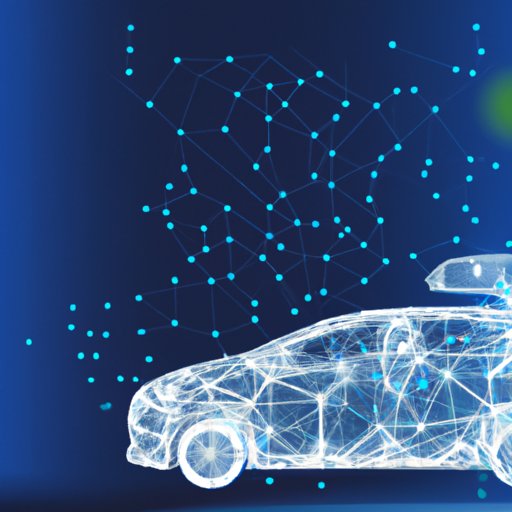Introduction
Automated vehicles, often referred to as self-driving cars, are rapidly becoming a reality. But what exactly is an automated vehicle, and how does it work? This article will explore the definition of an automated vehicle, the technology behind it, the potential benefits and risks associated with its use, and predictions for its future impact on society.
What is an Automated Vehicle and How Does it Work?
An automated vehicle, or self-driving car, is a vehicle that is capable of sensing its environment and navigating without human input. Automated vehicles use a combination of sensors, cameras, radar, lidar, and artificial intelligence (AI) to detect objects in their environment and make decisions about how to navigate around them. The technology behind automated vehicles has been in development for decades, but recent advances in AI and sensor technology have made it possible for these vehicles to be deployed in the real world.
The components of an automated vehicle include sensors, cameras, radar, lidar, and AI. Sensors detect the speed and direction of nearby objects, while cameras provide visual data such as lane markings and traffic signs. Radar and lidar measure distance and detect the shape and size of objects. Finally, AI is used to interpret the data from all of these components and make decisions about how to navigate the vehicle.
There are several different types of automated vehicles, ranging from semi-autonomous vehicles that require some human input to fully autonomous vehicles that can drive themselves without any human input. Examples of semi-autonomous vehicles include adaptive cruise control and lane-keeping assist, which can help drivers stay in their lane and maintain a safe speed. Fully autonomous vehicles are still in development but they could one day be able to drive themselves without any human input.
Benefits of Automated Vehicles
There are many potential benefits of automated vehicles, including improved safety, convenience, and cost savings. According to a study by the Eno Center for Transportation, 94% of crashes involve human error, so automated vehicles could help reduce the number of accidents on the road. Automated vehicles also offer convenience, as they can take care of mundane tasks such as parking or navigating in heavy traffic. Finally, automated vehicles could save money through reduced fuel consumption and lower insurance premiums.
“We believe that the widespread adoption of automated vehicles has the potential to significantly reduce traffic fatalities, improve mobility for underserved populations, and create new economic opportunities,” said Mary E. Peters, former secretary of the U.S. Department of Transportation.
Potential Risks of Automated Vehicles
Although there are many potential benefits of automated vehicles, there are also some potential risks that need to be considered. One of the main concerns is cybersecurity, as automated vehicles are increasingly connected to the internet and vulnerable to hacking. Additionally, there are regulatory challenges, such as the lack of standards for testing and certifying automated vehicles. Finally, there is the issue of liability, as it is unclear who is responsible if an automated vehicle is involved in an accident.
“We need to get the legal framework right, so that when automated vehicles go wrong, we know who is liable and how to manage the situation,” said Laura Macdonald, professor of law at the University of Edinburgh.

A Look at the Future of Automated Vehicles
Experts predict that automated vehicles will become more common in the coming years. According to a study by McKinsey & Company, automated vehicles could account for up to 15% of total miles driven by 2030. This would have a significant impact on society, as it could reduce traffic congestion, improve access to transportation for underserved populations, and create new jobs in the automotive industry.
“The emergence of automated vehicles has the potential to revolutionize the way people and goods move around,” said Raj Rajkumar, professor of electrical and computer engineering at Carnegie Mellon University.
Conclusion
In conclusion, automated vehicles are rapidly becoming a reality. They offer many potential benefits, such as improved safety, convenience, and cost savings, but they also come with some potential risks, such as cybersecurity concerns, regulatory challenges, and liability issues. As the technology continues to develop, experts predict that automated vehicles will become more common in the coming years, and could have a significant impact on society.
(Note: Is this article not meeting your expectations? Do you have knowledge or insights to share? Unlock new opportunities and expand your reach by joining our authors team. Click Registration to join us and share your expertise with our readers.)
